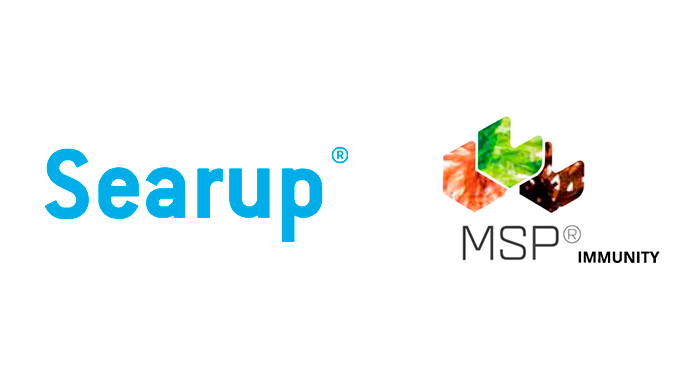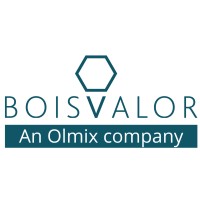Testimonials and feedback from veterinarians and experts around Searup®.
In the poultry farm business, viral outbreaks cause important performance and economical losses. All types of poultry can be affected in their lifetime and these viral infections can open the door to other infections as bacterial, infections, parasites… Major virus in poultry are Newcastle virus (NDV), Gumboro virus (IBDV), Infectious bronchitis (IBV) and Marek virus (MDV), among others.
The first signs of a viral challenge are usually an egg production drop, lower growth, or an increased mortality. These symptoms are due to a decrease of feed consumption, which causes a deficit in nutrient supplies leading the bird to stop the non-essential biological activities such as reproduction or growth.
To define or confirm a viral challenge the most common way is serology testing as for example for layer:
- One just after the transfer (around 18-19 weeks old).
- One during the first signs and one 3 to 4 weeks after.
- Another solution could be a quantitative PCR to detect the virus and the quantity of the DNA or RNA.
Defense against viral challenges in poultry consists in innate and adaptive mechanisms. The innate defense is mainly formed by natural killer cells, granulocytes, and macrophages and their secreted products, such as nitric oxide and various cytokines. This innate defense is crucial at the early stage of viral infections. To help birds, new approaches are used calling on specific nutraceutical products such as algae extracts.


Algae, a source of biological treasures
Macroalgae, or seaweeds, are eukaryotic and pluricellular organisms, divided in three different groups: green, red and brown. Detailed screening of macroalgal functions revealed new ranges of biological activities including antiviral, antibacterial and immunomodulatory activities. All of them could help birds face sanitary troubles.
Indeed, green, brown and red macroalgae cell wall contains large amounts of sulfated polysaccharides, named respectively ulvans, fucoidans and carrageenans, ranging from 4 up to 76% of seaweed dry weight (Holdt et al., 2011). The specificity of these algal polysaccharides (MSP®) stands in the complexity of their structure. Indeed, MSP® are branched polysaccharides, in contrast with linear polysaccharides like cellulose which contain only one type of linkage between sugars. Also, MSP® are composed of various and some rare sugar units (xylose, rhamnose), unlike homo-polysaccharides like starch which are exclusively composed of glucose units.
Finally, these sugars can be sulfated, conferring them a special reactivity. The whole of these parameters shows a phylogenic similarity with polysaccharides from the animal kingdom such as heparin, which explains MSP® unique biological properties. MSP®’s reactivity, hence their biological properties, varies a lot according to the type of sugars and linkage they contain, their level of sulfation and also their molecular weight. Therefore, several MSP® with distinct biological activities can be found in algae. Their specific extraction is a key to ensure a targeted effect on animals.
Assessing the immunomodulating effects of algae extract in vitro
Some of these polysaccharides can be extracted and purified for their immunomodulating properties. Olmix has worked on such extracts and the immunomodulating activity of its MSP®IMMUNITY (extracted from Ulva sp. green macroalgae) was first evidenced on porcine intestinal epithelial cells in vitro (Berri et al., 2016). MSP®IMMUNITY activated the expression of several cytokines involved in the activation, recruitment and migration of natural killer cells, as well as macrophages (involving in the defense against the viral infection).
To assist within the animal health management on farm, Olmix has developed one product named Searup® composed by MSP®IMMUNITY, vitamins (B-complex, A, D3…), amino acids and fatty acids. Searup® recommended to be administered during 3 to 5 days at 1 ml/ 10 kg live weight or 1 Searup® Spark 80g / 1 000L of water. Birds treated with Searup® showed better performance: decrease in mortality and an improvement in weight homogeneity.
Throughout the world, Searup® is nowadays succesfully and extensively used in poultry productions.
Use of Searup® in ducks’ production
Testimonial from Olivier Mathiaud, poultry vet in Brittany, France, shares his thoughts on Searup®:
“In duck production, producers must face and tackle multiple viral problems such as parvovirus, reovirus and herpesvirus. These diseases often result in substantial losses of revenues as in most cases, they are followed by secondary infections with bacteria such as E. coli.
The use of Searup® is recommended just after the first signs and must not wait the beginning of mortality: if and whenever the farmer note a decreasing of the food intake, an increase of FCR, respiratory sign or apathy, we recommend start a protocol of 5 days of Searup® administration with one spark of 80g for 1000 litters of water by using Searup® on viral challenges, we have been able to reduce the need of antibiotics as secondary bacterials infections were avoided.
A reduction on the total mortality of the flock was observed as well. The most important for the farmer user is to be able to quantify the effect of the Searup®. A rise in feed intake, a low mortality, more vigorous ducks have been noted the major benefits of Searup® use in ducks production with a growing number of ducks farmers systematically using Searup® to start their flocks.”

Use of Searup® in a layer farm
Testimonial from Benoit Quero, poultry vet from Brittany, France:
“Around the laying peak or later in the laying production period, we used to note an egg production drop and a viral cause could be suspected. It is not usual to perform systematical analyses even if it’s frequently demonstrated that a coronavirus can be at the origin of the problem and this despite important vaccine program for infectious bronchitis in pullet production.
These episodes drop in egg production, more or less severe, are highly more damageable as they happen at the beginning of the hen career.
The egg production drops some with a decrease in the shell quality are a security alert. In these situations, in such a situation Searup® was recommended at double dose, meaning 2 Searup® spark 80g per 1000 litters of drinking water during 2 to 3 days.
The feedback was fast, and we witnessed an improvement with a positive switch in the egg production curve. In my opinion, Searup® support efficiently the immune system of the bird particularly during the viral attacks. Searup® is including in my arsenal which is very light on challenges .”




